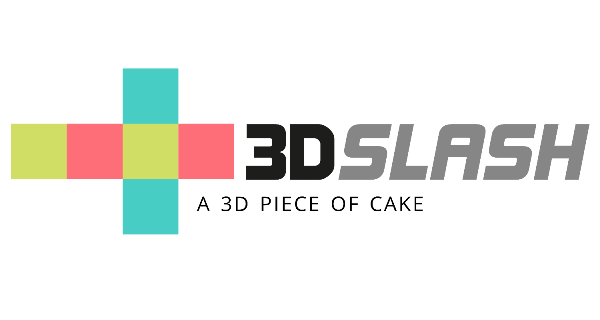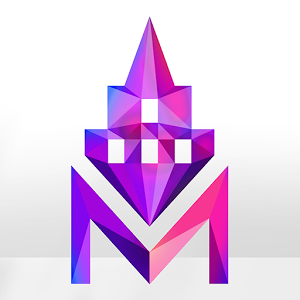six 3D Modeling Software Options for Beginners
If you´re completely new to computerized modeling for 3D printing, you should understand that you don’t have to be a professional artist to make something that comes out well, complex and sophisticated. People of all ages are welcome to give it a try and should approach it as a fun and enriching experience. You should, however, start your endeavor with programs that cater to those with basic drawing skills. There are many more than you would probably think, like the ones that are being discussed here.
Find the right 3D modeling software for your design requirements

1. tinkercad
TinkerCAD comes in handy if you have something specific in mind that you would like to develop, then export to send out to a 3D printing service without having to get bogged down in the actual printing complexities. Many use it in this manner happily and rather enjoy its ease and how it has few features available, preventing confusion. Newcomers to 3D design are sure to appreciate being able to start with 2D shapes and then simply converting them to 3D. It really does help as design may then feel like a progression instead of just shooting in the dark. This isn´t too common for these types of programs and can give you a real leg up when you´re learning how to realize what´s on your mind.
For many, TinkerCAD is their first exposure to this sort of design as it is accessible directly on the web. The fact that it´s browser based is quite convenient as you can save your design online and even share it with others without having to download anything at all. You can even use it on any device. It boasts an immense collection of shapes and designs that are available, a number of tutorials and a community which is sure to serve as an indispensable resource.
2. 3Dslash
The great thing about 3D Slash is that it is for everyone and is currently being taught as early as middle school. Many people use it on their phone or tablet. It is both fun and easy to use, so much so that kids are welcome to play around with it and flex their creative muscles. Young people are sure to benefit from this type of app as it serves as a more constructive alternative to the countless game apps that are almost too popular and distracting nowadays and lack in the learning and personal development department. It is characterized as vein fast meaning that you can pick it up at any o´le time and is explicitly for non-designer types.

Slash is simple in a very helpful way, its building block concept makes it so clear to understand that first-timers are sure to respond positively. One option is to start with one big block and the proceed to eliminate smaller blocks as though you were basically sculpting in a game with fun virtual tools like drills and hammers that work in different ways to remove what you don´t want. You can also start from scratch by joining different shapes together another fun feature is to use images that you can import as templates.
With Tinker and Slash you can develop your models by starting with basic shapes, making complexities is a gradual process in which you feel as though you are in very real control of the process.
3. cube team
CubeTeam works a lot like if you were to design using virtual lego blocks and is sure to capture the imagination of those who love popular design games like Minecraft. It is specifically designed to be used in conjunction with 3D printing and many have gone on to use it to create your very own small yet exceptionally cubic . Chocked full of personality, it´s an immersive process that invites you to express your emotions and dream of a different reality than the one you experience in your day to day. Perhaps the most interesting aspect of this program is that it is multi-player by nature and goes to great lengths to leave you with a socially active experience.


4. Makers Empire
MakersEmpire is a great program that hopes to, among other things, introduce and make a sort of game out of modeling. It invites kids who know how to use a computer to express themselves and keeps things interesting with a somewhat jovial interface that is sure to not confuse young people who have get to use modeling computer tools. It passes the most important test when it comes to 3D modeling for kids by being easy to learn to use without becoming bored by the process.
5. Vectary
While Vectary isn´t for novices strictly speaking, it does offer a great opportunity to test the limits of your skills and see where you land. It´s absolutely free, and serves as a great introduction to 3D modeling that isn´t intimidating or too confusing for you to figure out on your own, so long as you have the time. It is accessible on the internet which means that you don´t need to download anything whatsoever in order to design.

Another thing that makes it such a great resource is how it offers its users a very handy platform where you can discuss different topics and seek out help from a broad community of fellow design enthusiasts. Many do use the site to share their models with others which in turn opens up the creative process up to criticism and countless second opinions.This may end up being of great help as you can draw from a huge pool of experience that includes artists from all walks of life and professionals who can point you in the right direction through their expertise. Sort of like a focus group, anyone can use this resource to avoid making all kinds of unnecessary and time wasting mistakes before hitting the printer!
Vectary comes complete with a number of private models that can save you a lot of time and allow you to just tweak a model in order to get something you like. Although you do have to pay for them they do get the ball rolling and you thinking about what-s possible and what you would like to create, as well as how different things look.
6. sketch up
SketchUp is so well thought out that beginners are welcome to use it in order to realize engineering projects which may include civil and mechanical engineering. This means that it can be used by pretty much anyone to print a prototype of a particular product they have in mind as well as conjure up a detailed model of a particular project, for example a playground or a complex. To try it out you can give the freeware a try and although it doesn´t have an export function, it will allow you to give its tools a test run. Its somewhat minimal interface is particularly easy to use for an engineering 3D design program. They can be complicated and tend to be quite rigid and therefore not too intuitive for those who aren´t familiar.SketchUp is different and if you buy the package you can send quality models right to your printer.
The great thing about these programs is that most of them are free and allow you to try them out befor paying a dime. Find out what 3D modeling software is right for you and your project’s requirements, and get creating!
